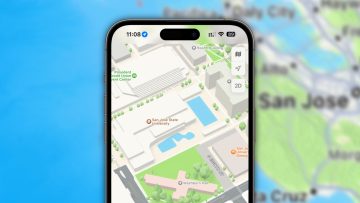We’re about two months away from Apple’s WWDC 2023 event, which should be a conference to remember. All rumors say the Apple headset featuring mixed reality is scheduled to be announced this June, several months ahead of its commercial release. The AR/VR wearable has been in the news for several years. Reports detailed the purported hardware and software features and Apple’s various struggles with development that led to purported launch delays.
More recently, we saw reports indicating the mixed reality headset has caused plenty of internal debate at Apple. Some execs are keenly aware the product won’t be a hit, like other Apple devices. The $3,000 entry price is one reason the wearable computer won’t sell as well as other Apple products. And Apple products already are more expensive than alternatives from rivals. Other reports noted that Tim Cook has been pushing for the AR/VR headset’s launch despite internal objections.
With all that in mind, I still plan on buying a first-gen Apple mixed reality headset the minute it’s out. I’ll even line up to get one if it comes to that. Even though I’m already aware the headset might not be a device I’ll use daily.
If reports are accurate, the mixed reality headset that Apple is working on will be as powerful as an M1- or M2-series computer. You’ll have a Mac on your head capable of delivering augmented (AR) and virtual reality (VR) content to your retina.
It’ll have high-resolution displays inside that ski goggle-like design and several cameras pointing inwards and outwards. The gadget should also feature eye and hand-tracking that will let you interact with various apps and digital objects.
While the AR/VR headset will not require a wired connection to a Mac or iPhone, it’ll reportedly connect to an external battery pack that’s good for two hours of use.
That’s not great battery life, but it’s probably the compromise we have to make do right now. Apple will need several chip and battery breakthroughs to extend the battery life of such devices. Then again, if the mixed reality headset isn’t comfortable to wear, you might not want to use it for extended periods.
Reports say a new realityOS operating system will power the whole thing, with Apple focusing on entertainment and communications. But productivity could also become a use-case for the wearable computer if the right apps are there.

All that might not sound exciting to most people, especially considering the high price tag. Again, we can’t ignore the big $3,000 elephant in the room. You can buy several Apple devices for that amount of money that will serve you much better than the mixed reality headset.
Come to think of it, most people will want to stay away from the first-gen device. Rumors already say that Apple is working on a cheaper model that would hit stores in the coming years.
So why would I buy the mixed reality headset as soon as Apple makes it available in stores? You might already guess the answer to that question. I’d want access to the device for work purposes. But that’s only a part of the story.
While some Apple execs might be reticent about the AR/VR headset’s success, I believe this will be a turning point in Apple’s history.
I’m not as interested in the VR part of the mixed reality experience as I am in AR. I’m looking forward to the AR glasses of the future that Apple will deliver once it’s able to tuck all this sophisticated hardware inside the frame of AR glasses that look like a pair of prescription glasses.
Let’s not forget Jony Ive’s vision for Apple’s AR glasses, as detailed in a recent report by The New York Times:
The video showed a man in a London taxi donning an augmented reality headset and calling his wife in San Francisco. ‘Would you like to come to London?’ he asked, two people who saw the video said. Soon, the couple were sharing the sights of London through the husband’s eyes.
The video excited executives about the possibilities of Apple’s next business-altering device: a headset that would blend the digital world with the real one.
It might take a lot longer to get us there than Ive and Apple would have wanted. But I do believe that the AR glasses of the future will be able to replace the iPhone. I also think that, at this stage, only Apple can deliver that sort of iPhone-replacing AR experience. Although I’d love to be wrong.
With that in mind, the best way to prepare for that AR future is to be there every step of the way. That means getting on that expensive AR/VR headset as soon as it’s out and then experiencing Apple’s software experiments every step of the way.
Would I be as excited about the mixed reality headset if covering Apple products wasn’t part of my job description? Probably, but I wouldn’t be as ready to purchase the AR/VR wearable as soon as it releases.








